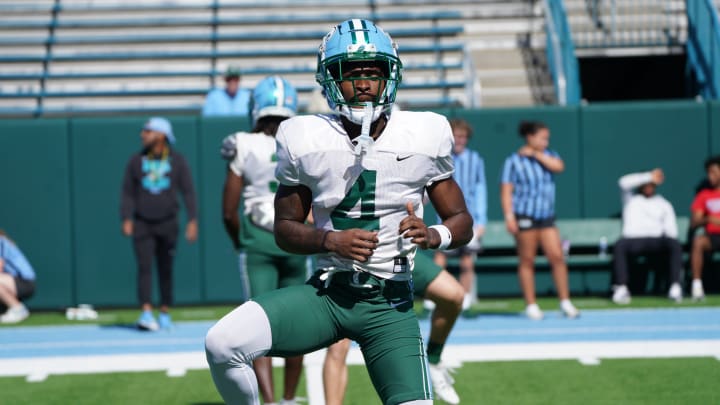Tulane Sets the Blueprint for Small School Competitiveness

The Tulane Green Wave continues to adapt to a dramatically changing college football landscape. We’ve officially entered the era of NIL and the transfer portal, and whether you like it or not, there is no turning back.
Fans who dislike these changes will typically point to competitiveness as the main reason they’re against the change, which is understandable. But as someone who sees potential in the changing landscape, Tulane has become the blueprint for how Group of Five schools can be competitive in this new era.
Before 2021, college football players who transferred schools were required to sit out a season before regaining their eligibility. That is no longer the case. Players who enter the portal are now eligible to play immediately, which has caused a colossal increase in the amount of players willing to change schools.
Players' empowerment is more important than large institutions. This freedom to transfer allows players to put themselves in the best position to succeed. It’s no secret that NIL money plays a significant factor in a player’s willingness to transfer, and personally, I am okay with that.
Only about 1.5% of college football players make it to the NFL, and just half of those players reach a second contract. Players should be able to capitalize on their athletic abilities financially during this incredibly short window.
You’ve likely heard that argument before, and that’s not the argument I am here to make. To remain competitive in the new landscape of college football, Group of Five schools should use Tulane's blueprint.
What is the Tulane blueprint? More specifically, how has Tulane managed to thrive in the modern era? First, Tulane has one of the best NIL collectives in Group of Five athletics, Fear the Wave, run by Tulane football alumni Jimmy Ordeneaux and Michael Arata. The two genuinely care about the program and the players and work eagerly to provide them with NIL opportunities.
Additionally, the new format of the transfer portal has given Tulane access to talent that would have previously been unacquirable. When a player like star receiver Chris Brazzell transfers from Tulane to Tennessee, Tulane is able to replace his production with Mario Williams and Shazz Preston, blue-chip prospects that Tulane couldn’t attract in the past.
Ty Thompson, the former Oregon quarterback, is another great example of this talent. Is Ty Thompson the best quarterback Tulane has ever had? Certainly not; he has yet to take a snap. But I can tell you he has one of the strongest arms of any Tulane quarterback. That kind of prospect never ended up at Tulane until now.
Tulane’s roster is filled with star athletes who were previously at Power Five/Four schools. Patrick Jenkins was originally at TCU. Yulkeith Brown played for Texas A&M before coming to Tulane. Mario Williams played for Oklahoma and USC, Shazz Preston for Alabama, and Khai Prean transferred from LSU.
None of these guys would be at Tulane without the eligibility restrictions lifted from the transfer portal and Fear the Wave’s reputation as a NIL collective.
This newly constructed roster will be fascinating to watch this season and has the potential to set the blueprint for how Group of Five programs can compete nationally in this era of college football.
